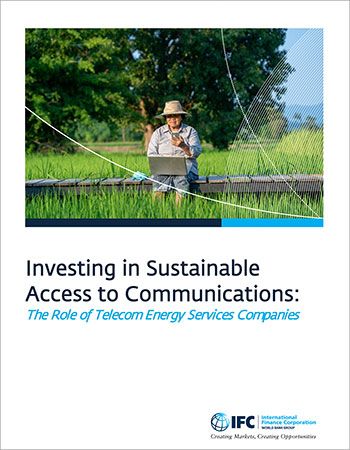Access to reliable power remains a challenge for telecom operators in many emerging markets. Non-existent to poor grid infrastructure at many tower locations have driven a high dependence on diesel fuel to power such sites, increasing energy costs and carbon footprint for telecom operators.
Over 90 percent of the 1 million off-grid and bad-grid sites are powered by diesel generators, emitting over 45 million tons of CO2 per year. The mobile industry has made a commitment to achieve net-zero greenhouse gas status by 2050. However, the transition to renewable energy has been slow. The number of bad and off-grid telecommunications sites is expected to grow by 22 percent over the next 10 years, from 611,000 to 745,000 sites.
Investing in Sustainable Access to Communications: The role of Telecom ESCOs, shines the light on an emerging group of companies called TESCOs (telecom energy services companies), that replace diesel powered solutions with hybrid renewable options to bridge the digital gap and boost the livelihoods of the most underserved and unserved populations.
The report finds that the estimated investment need for the forecast growth in TESCO sites amounts to $4 billion by 2030. TESCOs control the power equipment at nearly half (47 percent) of all renewable energy powered sites globally, which makes them a key partner to accelerate the green transition in the telecom industry. Additionally, the number of TESCO sites is expected to quadruple by 2030, from 42,000 today to 166,000 and the penetration of renewable energy solutions at bad and off-grid sites will increase from 10 percent today to 30 percent during the same period.
The report contributes to the growth and development of innovative solution providers for telecom sites located in areas with no access to electricity or substandard access by providing insights into the growth perspectives of the TESCO market globally. It also leverages existing investment opportunities to expand digital connectivity to rural/remote areas while reducing the carbon footprint of telecom operators.
Contents
- What are TESCOs?
- What is the outlook for bad-grid and off-grid sites?
- What is the growth potential for TESCOs?
- What are the different types of TESCOs?
- How can TESCOs be assessed as investment opportunities?
